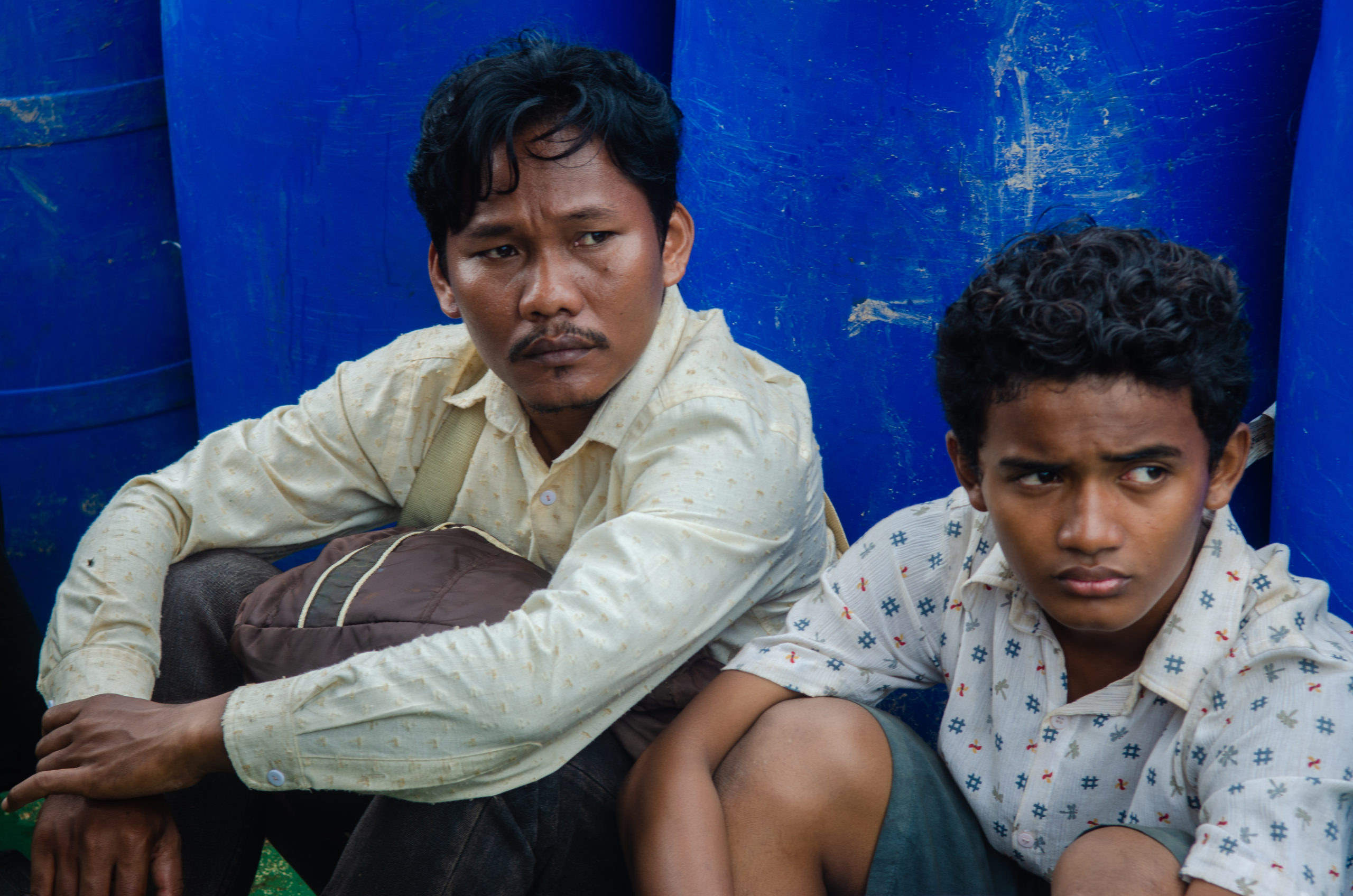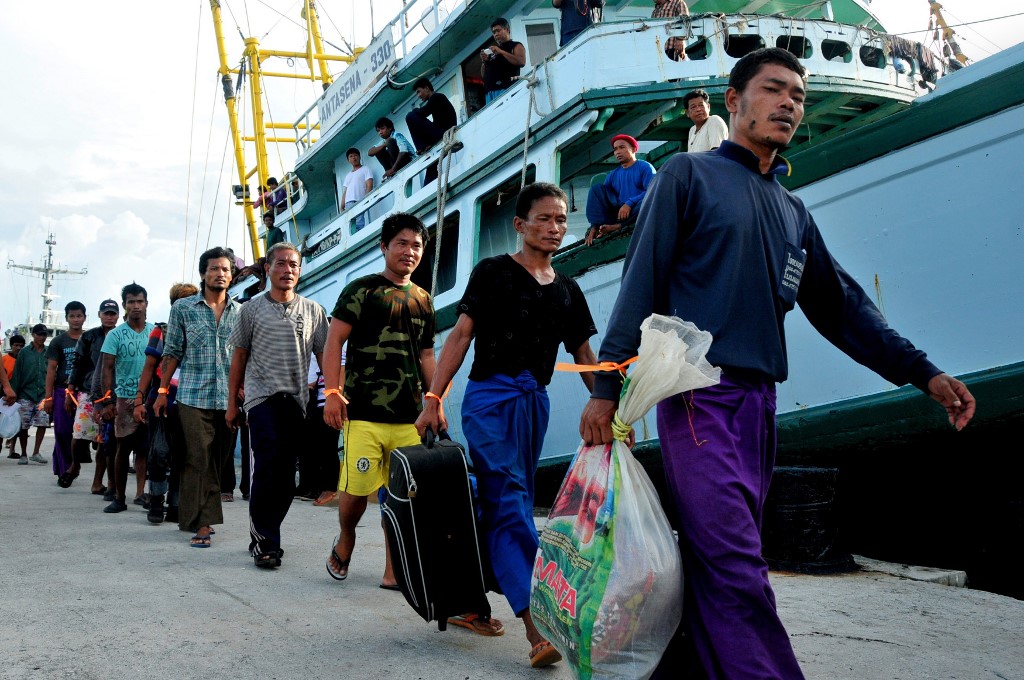A group of teens plays a game of football in an empty lot, surrounded by the rice fields and sugar palms that define Cambodia’s countryside. Despite their young age, one has just returned from nearby Thailand where he was working as an undocumented migrant. “How much can you make?” one boy asks. “I made 8,000 baht a month,” he responds. Lured by his friend’s story, his decision is an easy one. “I want to go.”
While a fictionalised scene from film Buoyancy, the trend it highlights is not.
Buoyancy tells the story of Chakra, a 14-year-old Cambodian boy as his struggles for independence lead him on a path into the Thai fishing industry, the seventh largest in the world and notorious for human rights abuses. Though released to critical acclaim at the 2019 Berlin International Film Festival, it has reignited the conversation around the use of slavery and bonded labour in Thai fisheries after emerging on digital streaming services in recent months.
After reading reports of abuse, the film’s Australian director Rodd Rathjen’s eyes were opened to the atrocities being committed on a daily basis in the name of the kingdom’s $6 billion fishing industry. He needed to spread the word he told the Globe during a recent phone call from his home in Melbourne.
“For me, it’s about trying to engage that audience that hasn’t read or heard about it and making it humanly accessible for them,” Rathjen said, speaking about the motivation behind the film.
“There are a lot of great documentaries about the fishing industry, but what I wanted to do was take the audience into that world, onto the boat, onto the trawler, and show what this process of dehumanisation looks like for the men and boys that have been exposed to this world.”
This dehumanisation is a direct result of the policies and practices of those in the industry. Decades of overfishing and irresponsible fishery management have left the once fertile Gulf of Thailand and Andaman Sea shadows of their former selves, with some estimates showing yields decreasing by more than 85% since 1966.
This reduced productivity has driven fishing conglomerates to drastic measures in search of profits, and human life is sacrificed in the name of economics with startling callousness. According to a groundbreaking 2015 report by the Environmental Justice Foundation, 68% of the former bonded fishermen they interviewed had experienced physical violence and 59% had seen someone murdered while aboard Thai trawlers.
“All of the violence was informed by the stories of survivors. There were some really awful things from the stories of the guys I talked to, that happened to them or they’d seen happen to other people.”

Following this dedication to authenticity, Buoyancy, like the people that end up trapped in bonded labour, in which workers struggle to pay off debt through work, doesn’t begin at sea. The film’s young protagonist is fed up with the lack of opportunities and what he sees as thankless labour in the rice fields helping his family, and hearing rumours of high-paying jobs across the border in Thailand, he leaves his home and enters the country illegally with the help of a broker.
“Illegal border crossings, like the one we showed in the film, those scenes happened to almost every survivor we spoke to: You pull up, get shoved into a ute and you don’t really know where the border is,” Rathjen said.
Once on the boat, Chakra slowly realises his fate, as the days spent shovelling the “trash fish” destined for shrimp farms and pet food factories into the ship’s hold turn into weeks and then months. The youngest member of the crew, Chakra’s complex, mentee-like relationship with the boat’s sadistic but charismatic captain is also a key element of the story and, again, has precedence in reality.
“That came about through talking to some of these guys that experienced a real closeness with the captains of these trawlers,” Rathjen explained.
The relationship between Chakra and the captain – who himself once worked as a slave aboard a trawler – also serves as a glimpse into a process that often contributes to this cycle of violence.
“I wanted to understand how a human being can become capable of such brutality and inhumanity. So, the fact that the captain had experienced it and then was trying to pass that on to the next generation is kind of an interesting psychological complex.”
I remember one time we were talking with a couple of captains at one of the ports our fixer said to me: ‘Be careful here, these guys have killed people before, so just be careful what you say’
Rathjen’s reliance on survivor’s stories about the brutality of these captains also sheds light on some of the complications of making a film about such a lucrative and illicit industry.
“We found it really hard to talk with people when we were in Thailand going around to the ports. They were incredibly protective of whatever it was they were up to,” he explained. “I remember one time we were talking with a couple of captains at one of the ports – I won’t say which one – our fixer said to me: ‘Be careful here, these guys have killed people before, so just be careful what you say.’”
Back in Cambodia, where the majority of Buoyancy was filmed, Rathjen mostly made contact with Cambodian survivors through NGOs that provide relief to former bonded labourers, although he came to realise just how prevalent this problem was during several trips around the country.
“It was incredible. You could just ask a person on the street and they would have a cousin, or a nephew, or a brother that had migrated to Thailand and ended up in the fishing industry and that had never come back. I had no idea it was on such a huge scale in Cambodia until we made these trips,” he said.
According to the Walk Free Foundation’s 2018 Global Slavery Index, some 260,000 Cambodians are engaged in some form of bonded labour.
Several years have passed since Rathjen and his crew were holed up on the windward side of the island off Cambodia’s coast, and while the uneven internet connection that drove his team to cabin fever remains patchy on Koh Rong Samloen, some in the Thai fishing industry suggest conditions aboard the trawlers have changed.
In 2015, after a series of reports revealing these abuses were released, the EU issued a yellow-card sanction on Thailand in an effort to combat the use of bonded and slave labour in the fishing industry, a sanction that was lifted at the beginning of 2019 in light of efforts to tackle abuses. Just last month a Thai local politician was arrested for allegedly trafficking Myanmar migrants onto fishing trawlers. If found guilty he could face 60 years in jail.
While some see this as a sign of progress on the part of Thai authorities and a demonstration of international pressure eliciting change, the reality on the ground is not as promising.

Certain changes – such as a law requiring labourers to have bank accounts as a way to improve payment transparency – seem like a step in the right direction, however, they may only push fishing companies to change their tactics. As recently as June last year, a Channel News Asia investigation found that boat captains were confiscating worker’s ATM cards under the guise of “safekeeping,” once again, leaving fishermen at the mercy of their captains.
Further recent reports of China’s use of bonded labour – in which footage of dead Indonesian fishermen being thrown overboard a Chinese vessel went viral in May – also highlight that the economic pressure, environmental degradation, and human exploitation that drive people into the industry are prevalent across Southeast Asia.
The ongoing difficulty in effectively curbing the use of bonded and slave labour in fisheries is, in itself, a testament to the importance of films like Buoyancy and their ability to humanise these stories. Many human rights organisations understand that, while international attention can be a useful tool in addressing human rights abuses, its effects only last as long as eyes are on the problem. Once the news cycle spins and focus shifts, a return to business as usual is all too common.
As a filmmaker, one project wraps and another begins, however, Rathjen remains committed to telling stories of people faced with terrible circumstances only to rise above them. His dedication to sharing the personal truths of the people he is writing about is at the heart of his work.
“For those people that don’t have power, as a filmmaker, I can kind of give them a voice,” Rathjen said. “For me, it’s about giving voice to the voiceless.”


